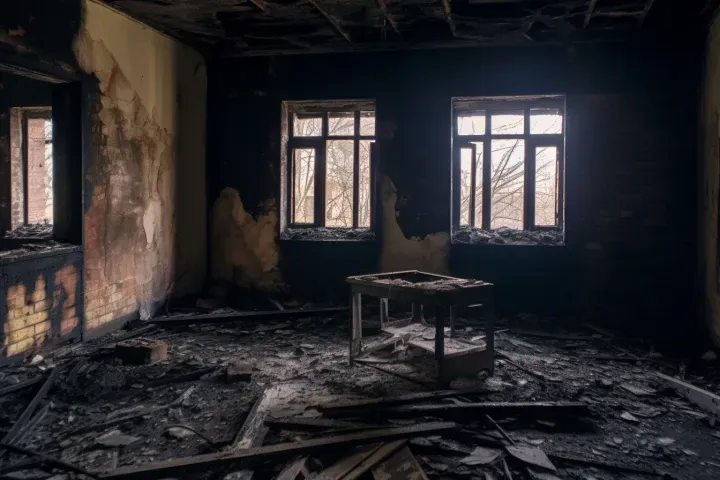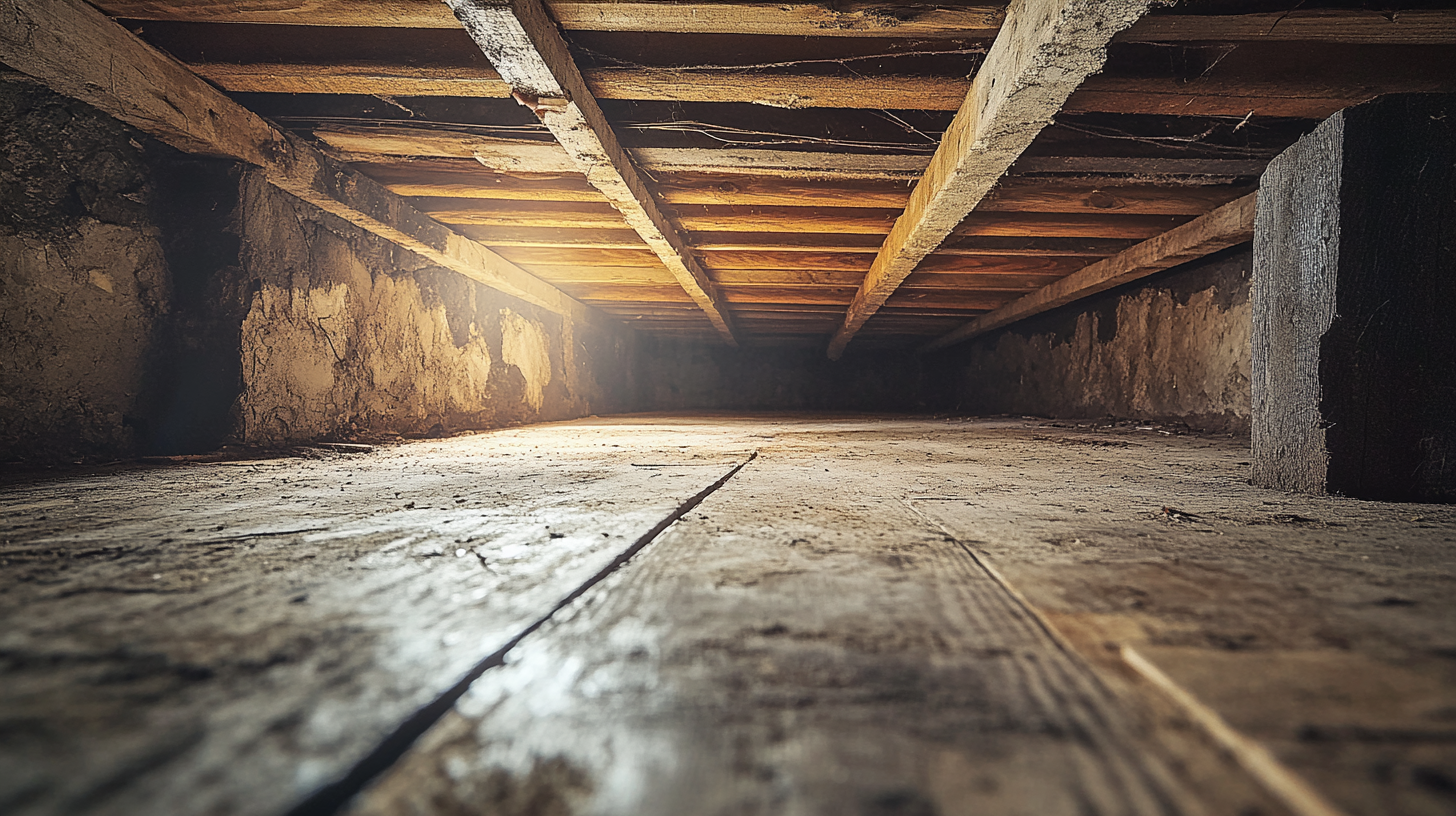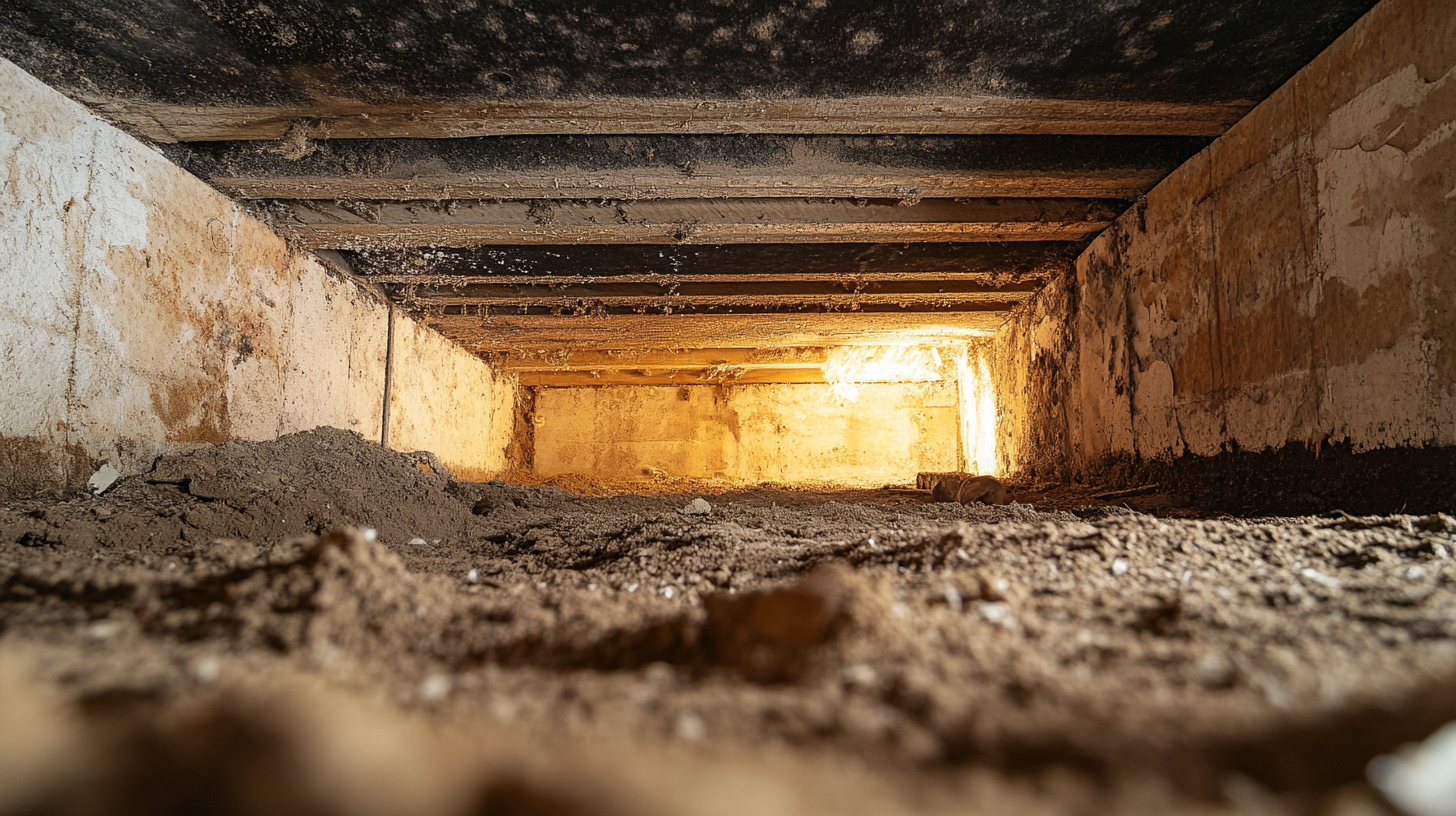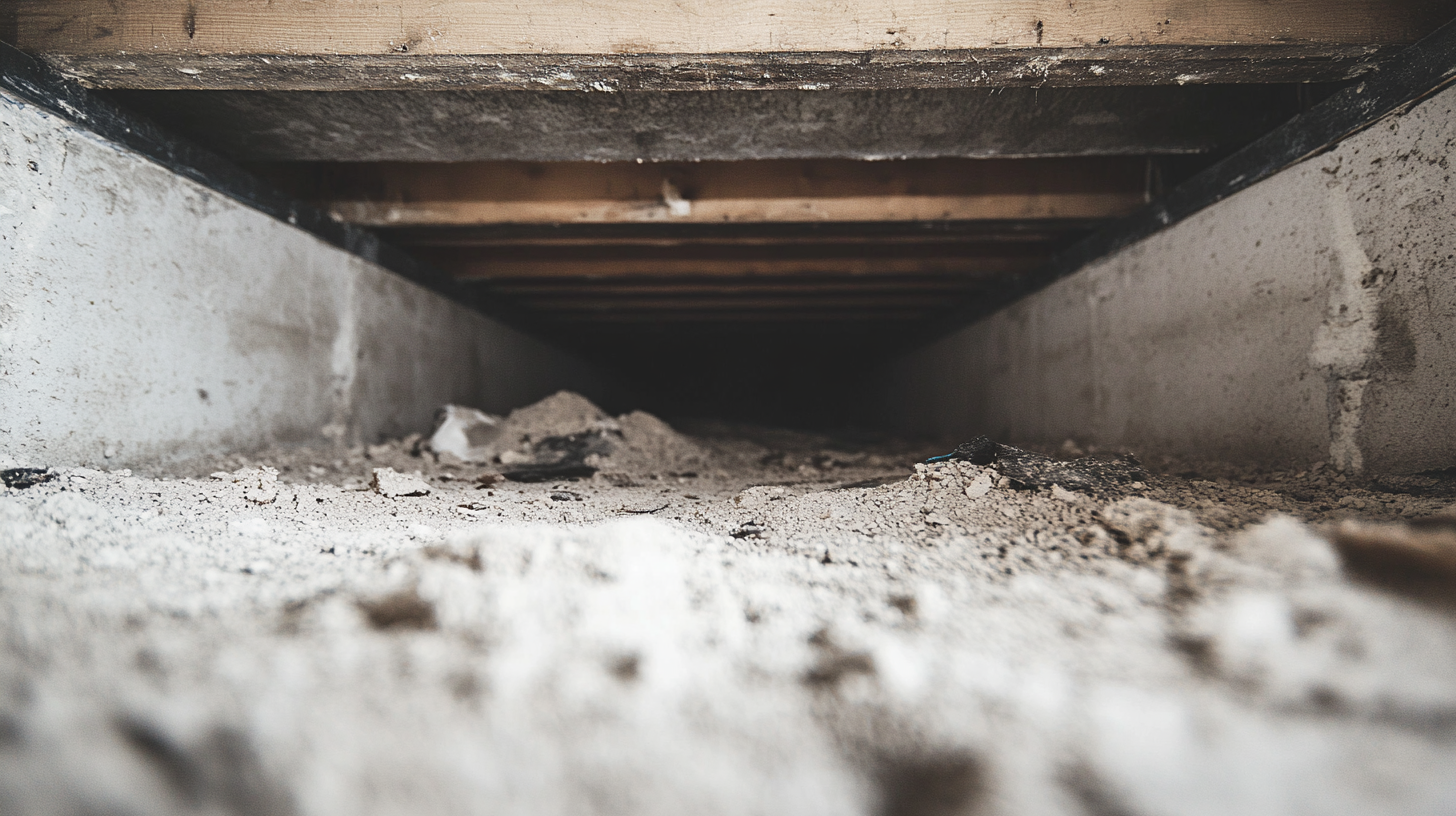Dealing with Soot: Best Practices

Soot, a common byproduct of fires, is more than just a cosmetic nuisance; it's a complex substance with significant implications for both health and property maintenance. This blog aims to demystify soot, explaining its formation, common sources, and why its proper cleanup is crucial for maintaining a healthy and safe environment.
Soot is produced through the incomplete combustion of organic materials like wood, fossil fuels, and plastics. It comprises a mixture of fine black particles, including carbon, tar, and various chemicals. These particles are not only unsightly but can also be harmful when inhaled or left unaddressed on surfaces.
The presence of soot in homes or commercial spaces often indicates a recent fire or malfunctioning heating systems. Its accumulation can occur from both large-scale fire incidents and everyday activities like burning candles or using poorly vented stoves. Regardless of the source, soot can adhere to almost any surface, leaving behind stains and odors that are challenging to remove.
Addressing soot is not just a matter of cleanliness; it's a health imperative. Soot particles can be tiny enough to inhale, potentially leading to respiratory issues and other health concerns. Moreover, soot's acidic nature can damage various materials, from fabrics and wallpapers to electronics and structural components of buildings.
In this blog, we will delve into effective strategies for soot cleanup, emphasizing the importance of timely and thorough methods. From DIY cleaning tips to professional remediation advice, we'll cover how to safely and effectively restore your space to its pre-soot condition, safeguarding both your health and your property.
Join us as we explore the intricacies of soot – its formation, risks, and the essential steps for its proper cleanup – offering practical advice to help you tackle this often-overlooked aspect of fire and smoke damage.
Understanding Soot and Its Impact
Soot is a common byproduct of combustion processes, often encountered in homes and buildings after fires or due to malfunctioning appliances. Understanding its composition and sources is crucial for effective cleanup and minimizing health risks. This section explores the nature of soot and its common sources.
The Composition of Soot
Soot is more than just the black or dark brown residue commonly seen after a fire. Here’s an insight into its composition and potential harm:
- What Soot is Made Of: Soot is primarily composed of carbon particles that result from the incomplete combustion of organic materials such as wood, oil, coal, and other fuels. It can also contain various chemicals, depending on the burned materials, including acids, metals, soils, and dust.
- Why Soot Can Be Harmful: The fine nature of soot particles makes them easily inhalable, posing respiratory health risks. These particles can penetrate deep into the lungs and cause a range of health issues, from bronchitis to heart disease. Additionally, the acidic properties of soot can cause corrosion and damage to surfaces and materials it settles on.
Common Sources of Soot in Homes and Buildings
Soot can originate from several sources within homes and buildings, each contributing to the indoor air quality and surface cleanliness. Here are some typical sources:
- Fires: The most obvious source of soot is fires, whether small-scale incidents like a kitchen fire or larger structural fires. The type of material burned in the fire significantly influences the composition of the resulting soot.
- Malfunctioning Appliances: Faulty or improperly vented heating systems, such as furnaces, boilers, and fireplaces, can produce soot. This is often due to incomplete combustion within these appliances.
- Candles and Smoking: Regular burning of candles, especially those made from paraffin wax, and indoor smoking can also contribute to soot accumulation over time.
- Outdoor Sources: In some cases, soot can enter homes from external sources like nearby industrial activities or heavy traffic, especially in urban areas.
Understanding the composition and sources of soot is essential for addressing its impact effectively. This knowledge not only aids in proper cleanup and restoration but also in taking preventative measures to reduce soot production and accumulation in homes and buildings.
Health and Safety Considerations
When dealing with soot, it's crucial to understand the health risks associated with exposure and the importance of using proper safety equipment during cleanup. This section delves into the potential health hazards of soot and outlines the recommended personal protective equipment (PPE) for safe soot cleanup.
Health Risks Associated with Soot
Soot exposure can pose significant health risks, particularly due to its fine particulate nature and chemical composition. Here’s an overview of the potential hazards:
- Respiratory Issues: Inhaling soot particles can lead to respiratory problems, including bronchitis, asthma exacerbation, and other lung diseases. Fine particles can penetrate deep into the lungs and even enter the bloodstream.
- Skin and Eye Irritation: Direct contact with soot can cause skin irritation, rashes, and eye irritation, including redness and itching.
- Long-Term Health Effects: Prolonged exposure to soot can increase the risk of more serious conditions, such as heart disease and certain types of cancer, due to the carcinogenic nature of some components in soot.
Safety Equipment for Soot Cleanup
Using the right personal protective equipment is essential for minimizing health risks during soot cleanup. Here are the recommended PPE and guidelines for their use:
Recommended Personal Protective Equipment (PPE):
- Respirators: Use an N95 respirator or a more advanced half-face respirator to filter out harmful particles.
- Gloves: Wear nitrile or latex gloves to protect your hands from direct contact with soot.
- Protective Eyewear: Use safety goggles to prevent soot particles from entering your eyes.
- Coveralls: Consider wearing disposable coveralls to protect your clothing and skin.
Proper Usage and Disposal of PPE:
- Correct Fit: Ensure that the respirator fits snugly and seals properly around your face.
- Regular Replacement: Replace gloves and respirators as needed, especially if they become soiled or damaged.
- Safe Disposal: Dispose of used disposable PPE properly, considering them as contaminated waste.
- Cleaning Reusable PPE: Clean any reusable PPE according to the manufacturer’s instructions to maintain their protective qualities.
Understanding and adhering to these health and safety considerations are crucial when handling soot. Proper precautions and the use of appropriate PPE can significantly reduce the risk of health issues associated with soot exposure.
Preparing for Soot Cleanup
Effective soot cleanup begins with thorough preparation. This involves assessing the extent of the damage and taking initial steps to ensure a safe and efficient cleaning process. This section provides guidelines for evaluating soot damage and outlines the initial steps and precautions to take before beginning the cleanup.
Assessing the Area
Before starting the cleanup, it’s important to assess the area to understand the scope of the soot damage. Here are some guidelines:
- Visual Inspection: Conduct a thorough visual inspection of all affected areas. Look for soot on walls, ceilings, floors, and surfaces.
- Identifying Soot Types: Different types of soot (oily, dry, powdery) require different cleaning methods. Identifying the type of soot can guide your cleaning approach.
- Checking Hidden Areas: Inspect behind and under furniture, in crevices, and other less obvious places for soot accumulation.
- Assessing Odor: Be aware of the presence of smoke odor, as this can indicate the pervasiveness of soot particles in the area.
Initial Steps and Precautions
Taking the right initial steps and precautions is crucial for a safe and effective soot cleanup. Here are key points to consider:
Securing the Area and Ensuring Proper Ventilation:
- Restrict access to the affected area to prevent the spread of soot.
- Open windows and use fans to ventilate the area, reducing the concentration of airborne soot particles.
Removing Unaffected Items to Prevent Cross-Contamination:
- Remove items that have not been affected by soot to prevent them from becoming contaminated during the cleanup process.
- Cover unaffected furniture and electronics with plastic sheets to protect them from soot and cleaning products.
Documenting the Damage:
- Take photos or videos of the affected area for insurance purposes.
- Make a list of damaged items to assist in the insurance claim process.
Safety Precautions:
- Wear appropriate personal protective equipment (PPE), such as gloves, masks, and goggles, during the assessment and cleanup.
- Be cautious of electrical hazards, especially if the soot damage is a result of a fire.
Preparing for soot cleanup involves a careful assessment of the damage and taking steps to ensure the area is safe and ready for cleaning. These initial actions set the foundation for a successful and thorough cleanup process.
Soot Removal Techniques
Removing soot effectively is crucial to restore the cleanliness and safety of an area affected by smoke or fire. This section covers methods for cleaning soot from various surfaces, including walls, ceilings, hard surfaces, textiles, and upholstery, and provides guidance on the appropriate cleaning agents, tools, and considerations for professional cleaning services.
Surface Cleaning
Soot on walls, ceilings, and hard surfaces requires careful cleaning to avoid further damage. Here are methods and tools for effective soot removal:
Methods for Cleaning Soot from Walls, Ceilings, and Hard Surfaces:
- Begin with a dry cleaning sponge (chemical sponge) to remove loose soot without smearing.
- For stubborn soot, use a mild detergent mixed with water. Gently wipe the surface and rinse with clean water.
- In cases of heavy soot, a degreaser or specialized soot remover may be necessary.
Appropriate Cleaning Agents and Tools:
- Avoid harsh chemicals that can damage the surface. Opt for pH-neutral cleaners for sensitive materials.
- Use soft cloths or sponges to prevent scratching surfaces.
- For textured surfaces or intricate details, use a soft-bristled brush to gently loosen soot particles.
Dealing with Textiles and Upholstery
Soot can deeply embed in fabrics, making cleanup challenging. Here are techniques and considerations for textiles and upholstery:
Techniques for Removing Soot from Fabrics, Carpets, and Furniture:
- Vacuum the fabric surfaces with a HEPA filter vacuum to remove loose soot particles. Avoid using brush attachments.
- For washable fabrics, laundering with a mild detergent can help remove soot. Consider adding a color-safe bleach for white or colorfast items.
- For non-washable fabrics and upholstery, dry cleaning or specialized upholstery cleaners may be necessary.
Considerations for Professional Cleaning Services:
- For valuable, delicate, or heavily soiled items, professional cleaning services are recommended. They have the expertise and equipment to handle different types of fabrics and soot.
- Inquire about the cleaning methods used by the service to ensure they are appropriate for your items.
- Consider testing the cleaning method on a small, inconspicuous area of the fabric first.
Effective soot removal from various surfaces is key to restoring the affected area. While DIY methods can be effective for light to moderate soot, professional services may be necessary for more severe cases or delicate items.
Special Considerations for Electronics and Art
Dealing with soot damage extends beyond typical household surfaces and requires special attention when it comes to electronics and art. These items are not only valuable but also particularly susceptible to damage from soot and improper cleaning methods. This section provides guidance on cleaning electronics and handling art and delicate items affected by soot.
Cleaning Electronics
Electronics require careful handling to avoid further damage when cleaning soot. Here are precautions and methods to consider:
- Precautions and Methods for Cleaning Soot-Damaged Electronics:
- Power Off and Unplug: Ensure all devices are turned off and unplugged before cleaning.
- Avoid Liquid Cleaners: Liquids can cause further damage. Instead, use a dry microfiber cloth to gently wipe away soot.
- Compressed Air: Use compressed air to blow soot out of crevices and vents. Be gentle to avoid pushing soot further into the device.
- Professional Assessment: For heavily soiled or valuable electronics, consider professional cleaning services. They have the expertise and equipment to safely clean and restore electronics.
Handling Art and Delicate Items
Artwork and fragile items require a delicate touch to safely remove soot without causing damage. Here are tips for handling these items:
Tips for Safely Cleaning Soot from Artwork and Fragile Items:
- Dry Cleaning: Start with a dry, soft brush or a chemical sponge to gently remove soot. Avoid rubbing or applying pressure.
- Avoid Water and Chemicals: Water and chemicals can damage the surface of artwork. If necessary, consult a professional conservator for advice.
- Handling with Care: Wear gloves to protect the item from oils and dirt on your hands. Handle artwork and delicate items as little as possible to avoid accidental damage.
- Professional Restoration: For valuable or antique items, professional restoration is often the safest option. Specialists in art restoration can provide the necessary care and expertise.
Cleaning electronics and artwork affected by soot requires careful consideration and gentle handling. In many cases, seeking professional assistance is the best course of action to ensure these items are safely and effectively restored.
FAQs
Contact Fast Response Cleaning & Restoration Today!
Fast Response Cleaning & Restoration will do everything we can to ensure your experience with us is excellent.
Request A FREE Estimate
Request A FREE Estimate Form
CHECKOUT RECENT POST



Have an Emergency? We're Here to Help!
When it comes to disaster cleanup, we are a seasoned veteran in the industry and have helped hundreds of property owners just like you.
Our disaster recovery teams are available 24-7 to quickly clean up and repair disasters of all types.
